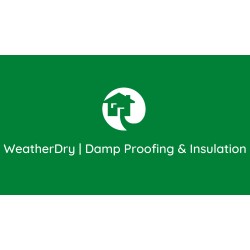Damp Proofing in Burton upon Trent
Filter your search
Post your job FREE and let trades come to you
Save time by filling out our simple job post form today and your job will be sent to trades in your area so you can sit back, relax and wait for available trades to contact you.
Post your job FREESearch Damp Proofing in places nearby
Understanding Damp Proofing in Burton upon Trent
Damp proofing is a crucial aspect of maintaining the structural integrity and comfort of homes, especially in areas like Burton upon Trent. This charming town, known for its rich brewing history, also faces its fair share of damp-related issues due to its climate and older buildings. In this article, we will delve into the various aspects of damp proofing, exploring its importance, methods, and benefits, while providing practical advice for homeowners in Burton upon Trent.
What is Damp Proofing?
Damp proofing refers to the range of techniques used to prevent moisture from penetrating the walls and floors of a building. It is essential for protecting properties from the damaging effects of damp, which can lead to structural issues, health problems, and aesthetic damage. In Burton upon Trent, where the weather can be quite wet, damp proofing is particularly important to ensure homes remain dry and comfortable.
Why is Damp Proofing Important in Burton upon Trent?
The climate in Burton upon Trent, characterised by frequent rainfall and high humidity, makes buildings susceptible to damp problems. Without proper damp proofing, moisture can seep into the walls, leading to mould growth, wood rot, and even structural damage. Furthermore, damp environments can exacerbate respiratory issues and allergies, making it vital for homeowners to invest in effective damp proofing solutions.
Common Signs of Damp in Homes
- Peeling wallpaper or paint
- Musty odours
- Discoloured patches on walls or ceilings
- Presence of mould or mildew
- Cold or damp feeling in rooms
Recognising these signs early can help homeowners in Burton upon Trent take timely action to prevent further damage.
Types of Damp Affecting Properties
There are three main types of damp that can affect properties: rising damp, penetrating damp, and condensation. Each type has distinct causes and requires specific treatment methods.
Rising Damp
Rising damp occurs when moisture from the ground rises up through the walls of a building. This is often due to a failure in the damp-proof course (DPC) or the absence of one altogether. It is commonly seen in older properties in Burton upon Trent.
Penetrating Damp
Penetrating damp is caused by water entering a building through external walls, roofs, or windows. This can be due to poor maintenance, such as blocked gutters or damaged roofing, which allows rainwater to seep in.
Condensation
Condensation is the most common form of damp and occurs when warm, moist air comes into contact with cold surfaces, leading to water droplets forming. Poor ventilation and insulation are often the culprits.
Effective Damp Proofing Methods
There are several methods available for damp proofing, each suited to different types of damp and building structures. Here are some of the most effective techniques:
Damp Proof Course (DPC)
A DPC is a barrier, typically made of plastic or bitumen, installed in the walls of a building to prevent rising damp. For properties without a DPC, retrofitting one can be an effective solution.
Damp Proof Membrane (DPM)
A DPM is a sheet of material laid under concrete floors to prevent moisture from rising through the ground. This is particularly useful in areas prone to high groundwater levels.
Waterproofing Paints and Sealants
These products can be applied to walls and surfaces to create a waterproof barrier, preventing moisture penetration. They are ideal for treating minor damp issues and providing an additional layer of protection.
Improving Ventilation
Ensuring adequate ventilation can help reduce condensation by allowing moist air to escape. Installing extractor fans in kitchens and bathrooms, as well as using dehumidifiers, can significantly improve air quality.
Choosing the Right Damp Proofing Specialist
When it comes to damp proofing, selecting a qualified specialist is crucial. Homeowners in Burton upon Trent should look for professionals with a proven track record, relevant certifications, and positive customer reviews. A reputable specialist will conduct a thorough assessment of the property and recommend the most suitable solutions.
Cost Considerations for Damp Proofing
The cost of damp proofing can vary depending on the extent of the problem and the methods used. While it may seem like a significant investment, addressing damp issues promptly can save homeowners money in the long run by preventing costly repairs and maintaining property value.
Benefits of Damp Proofing
Investing in damp proofing offers numerous benefits, including:
- Enhanced structural integrity
- Improved indoor air quality
- Increased property value
- Reduced risk of health issues
- Lower energy bills due to improved insulation
Maintaining a Damp-Free Home
Regular maintenance is key to keeping a home damp-free. Homeowners should routinely check for signs of damp, ensure gutters and downspouts are clear, and address any leaks or damage promptly. Additionally, maintaining good ventilation and insulation can help prevent damp problems from arising.
Environmental Impact of Damp Proofing
While damp proofing is essential for protecting homes, it is also important to consider the environmental impact of the materials and methods used. Opting for eco-friendly products and techniques can help minimise the carbon footprint of damp proofing projects.
Frequently Asked Questions
What is the difference between damp proofing and waterproofing?
Damp proofing is designed to prevent moisture from entering a building, while waterproofing provides a complete barrier against water ingress. Waterproofing is typically used in areas with high water exposure, such as basements.
How long does damp proofing last?
The longevity of damp proofing depends on the method used and the quality of installation. A properly installed DPC can last for decades, while other treatments may require more frequent maintenance.
Can I damp proof my home myself?
While some minor damp issues can be addressed with DIY solutions, it is generally recommended to hire a professional for comprehensive damp proofing to ensure effective and long-lasting results.
Is damp proofing covered by insurance?
Insurance coverage for damp proofing varies by policy. Homeowners should check their insurance terms to determine if damp-related issues are covered.
How can I prevent condensation in my home?
To prevent condensation, ensure good ventilation, use extractor fans, and avoid drying clothes indoors. Additionally, maintaining a consistent indoor temperature can help reduce condensation.
What should I do if I suspect damp in my home?
If you suspect damp in your home, it is important to act quickly. Contact a damp proofing specialist to assess the situation and recommend appropriate solutions.
Final Thoughts on Damp Proofing in Burton upon Trent
Damp proofing is an essential consideration for homeowners in Burton upon Trent, given the town's climate and the prevalence of older properties. By understanding the types of damp, recognising the signs, and choosing the right damp proofing methods, residents can protect their homes from moisture-related damage. Investing in professional damp proofing not only preserves the structural integrity of a property but also enhances the quality of life for its occupants. With the right approach, homeowners can enjoy a dry, healthy, and comfortable living environment.










